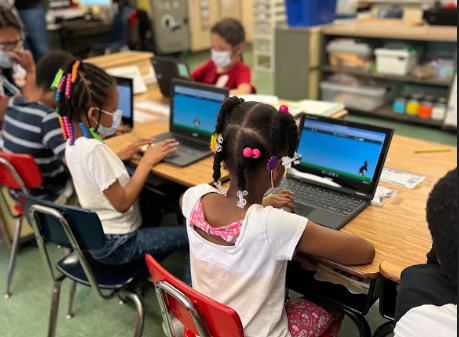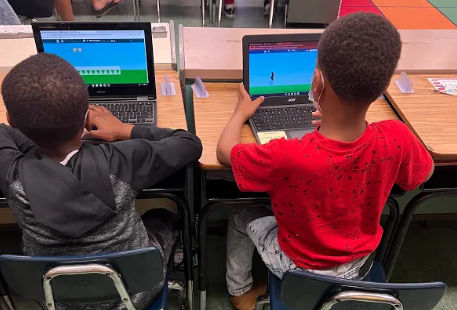
Milwaukee Public Schools (MPS) is the largest school district in Wisconsin and serves over 77,000 K-12 students. Its mission is to accelerate student achievement by improving access to grade-level curricula for college and career readiness. Working with MIND Research Institute, MPS recently made ST Math available in every one of their elementary and middle schools, and in select high schools. The program is used as a tier-one intervention supplemental math program and is available to all MPS students.
Nearly seven years ago, a handful of MPS schools began piloting ST Math through a grant provided by the TOSA Foundation. Mary Kasten, Teacher Leader for the Milwaukee Partnership Schools grant, saw that ST Math’s language-agnostic, visual-first approach enabled students to master grade-level concepts through their assessments.

After experiencing a considerable amount of success with these students, the challenge remained: how could the district scale ST Math’s efficacy while still considering the diversity of MPS’ student population?
ST Math is a PreK-8 visual instructional program that leverages students’ spatial-temporal reasoning ability to solve mathematical problems. ST Math begins visually, and then gradually introduces traditional symbols and language as students master mathematical concepts. ST Math puzzles utilize a variety of visual, spatial-temporal models to present math concepts in non-routine ways and provide animated, informative feedback that adapts to a student’s response.
ST Math is designed to be implemented as a supplemental mathematics curriculum integrated into classroom instruction. MIND Research Institute provides educators with program training to ensure successful implementations, all while transforming pedagogy.
Additional educator training is available that touches on topics such as facilitation and engagement strategies, developing classroom culture, deepening content knowledge, promoting mathematical discourse, and more. Training is offered both on-site and online.
MPS used ST Math as their tier-one intervention, however, a significant challenge to implementing any type of program is considering the unique needs of student groups. From bilingual learners and neurodivergent learners, to deaf and hard of hearing students, ST Math’s emphasis on visual models makes math learning more accessible to more students. When students of all levels can problem solve without distractions, educators see dramatic increases in understanding and achievement.
One of the schools we visited was Neeskara Elementary School which educates deaf and hard of hearing students. The students loved watching our professional learning specialists take them through a series of math puzzles. There were no words or sounds that could impede their understanding of the material in front of them. All the students had to focus on were the visual elements within each puzzle with the objective of getting JiJi across the screen.
Humans learn not by being told but by doing. We’re hardwired to learn by interacting with the world around us and then perceiving the results. Neuroscientists call this simple yet powerful system the perception-action cycle.
In ST Math, action is critical and mistakes are the perfect opportunity for learning. Animated immediate feedback offers an intrinsically motivating learning experience that shows students the mathematical consequences of each answer. Talking about the puzzles comes naturally to students but we can dive even deeper into promoting mathematical discourse by facilitating Puzzle Talks.
It was so inspiring to hear students just talk about math, and get excited to hear what their peers thought and to follow their directions.
—Charis Moss, MIND Education Success Manager
The use of ST Math puzzles to lead a whole group or small group short conversation are what we call Puzzle Talks. Similar to number talks or math talks, the goal is to get students to communicate and deepen their understanding of mathematics. Puzzle Talks leverage the power of the visual models and manipulatives inherent in ST Math and use language to support the learning experience and encourage math discourse.

When our team begins working with any district, we carefully consider their needs as a whole as well as each individual school site. We thoughtfully plan each visit by delivering the latest evidence-based research to decision-makers that demonstrates ST Math’s positive impacts on student outcomes.
Our experiences have also taught us that teacher support is the primary indicator of success when implementing ST Math. That’s why on day one, we work to ensure that both our teams build strong working relationships so we can problem-solve together.
Curious about how ST Math can impact your school or district? Request a demo today!

Parker Erickson was MIND’s Content and Community Specialist. As a digital storyteller, Parker is passionate about building strong communities through technology and social media. Off the clock, you can find him buried in the latest issue of The New Yorker or experiencing different cultures through food.
Comment